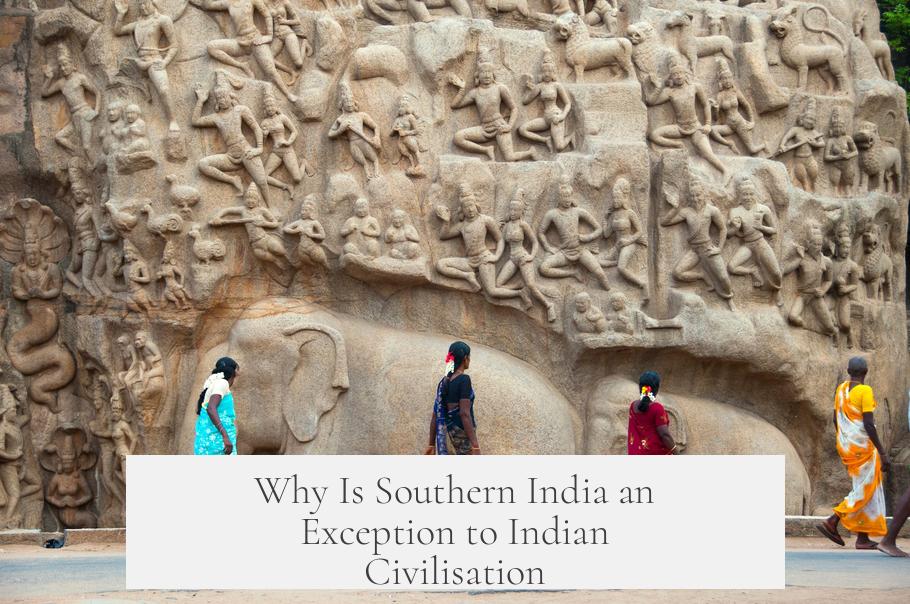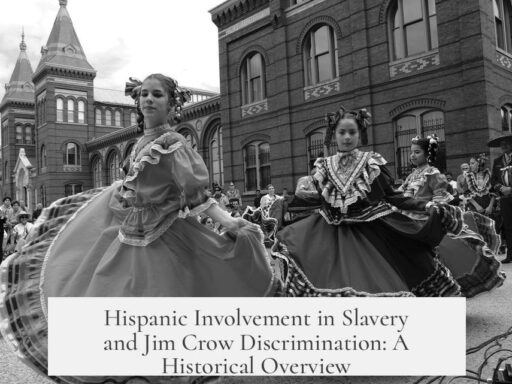Southern India stands as an exception to Indian civilisation largely due to its unique geography, political history, cultural developments, and its distinct role within the broader Indian cultural landscape. Key factors shaping this distinctiveness include the formidable Deccan Plateau, limited northern empire dominance, diverse local religious practices, and persistent separate political identities.
The Deccan Plateau acts as a natural geographic barrier between northern and southern India. Its terrain is rugged, featuring mountains, hills, and dense forests. This difficult landscape restricts easy movement and communication, preventing the kind of political unity evident in the north. Northern India benefits from large river systems such as the Indus and Ganges, forming an east-west axis that promotes connectivity and empire-building. In contrast, Southern India lies beyond the Narmada River, which often served as a rough boundary for northern powers, isolating it geographically.
Historically, major northern empires like the Maurya, Gupta, and Mughal dynasties failed to fully conquer or integrate Southern India. Their control rarely extended beyond the Narmada River, with the Rashtrakuta dynasty being a rare southern power involved in trilateral conflicts with northern factions like the Rajputs and Gurjura-Pratihara. Southern political entities developed independently, often thriving through vigorous maritime trade. The Chola Empire exemplifies this independence with its sea-based connections extending to Southeast Asia, making it resemble a Venetian maritime power in scope and influence.
Culturally, Southern India exhibits significant diversity within Hinduism and other local religious traditions. Hinduism spread as a ruling-class religion but often adapted differently in the south. Unlike a single unified religion, many local towns maintained their own deities and distinct myths, reflecting a syncretic and eclectic religious landscape before the 19th century. This regional variety is reinforced by the later British-era ‘Protestantizing’ reform movement within Hinduism to unify practices and doctrines in response to Christian missionary challenges. As such, the South’s religious identity is both Hindu and uniquely local, illustrating how religion there did not follow a monolithic cultural template.
Understanding Southern India’s relationship to ‘Indian civilisation’ requires recognizing the complexity and scale of India itself. India is neither a monolithic culture nor a historically unified nation in a strict sense. Like the European continent, India comprises many languages, cultures, and political units. Viewing Southern India as an ‘exception’ risks oversimplifying this diversity. Rather, the South has always been one region within a broad mosaic of subcultures and histories, sometimes integrated politically, but often independent. Modern political unity is a recent historical phenomenon, and long periods of fragmentation were the norm.
Concrete examples highlight this distinct Southern identity. The city and empire of Vijayanagar, located in southeastern India, was once among the largest and wealthiest urban centers in India’s last 2000 years. Its defeat in 1565 by northern sultanates marked both the zenith and destruction of a major southern political power. This event symbolizes the persistent political fragmentation and conflict between northern and southern polities, alongside the survival of separate cultural traditions.
| Factor | Characteristic | Impact on Southern India’s Exceptionality |
|---|---|---|
| Geography | Deccan Plateau, difficult terrain | Natural barrier limiting northern political unification |
| Political History | Northern empires’ limited southward conquest | South developed autonomous political structures, maritime empires |
| Culture & Religion | Diverse Hindu practices, syncretic local faiths | Distinct religious identity differing from north’s Hinduism |
| Conceptual Framework | India as diverse civilization akin to Europe | South is part of Indian civilisation, functioning as a significant cultural region |
| Historical Example | Vijayanagar Empire | Illustrates southern political and cultural distinctiveness |
- The Deccan Plateau shapes the political and cultural divide between Northern and Southern India.
- Northern empires never fully integrated the South, allowing distinct southern powers to rise.
- Southern Hinduism includes diverse practices and strongly local religious forms.
- Defining Indian civilisation requires acknowledging its internal diversity; Southern India is integral yet distinct.
- Vijayanagar exemplifies Southern India’s historical prominence and difference.
Why Is Southern India an Exception to Indian Civilisation?

Southern India stands apart from the broader sweep of Indian civilisation due to a mix of geography, politics, culture, and history that create a unique identity rarely fully woven into the northern narrative. Let’s break down why this region often appears as the “exception” on the Indian map.
Think of India as a vast stage, but with the Deccan Plateau playing a bit of a stubborn divider between the North and the South. It’s not just some minor hill range; this plateau is a dramatically rugged landscape filled with mountains, hills, and dense jungles. This environment made travel and military campaigns tough. Because of it, political unity stretching from the far North to deep South was pretty rare.
Historically, empires like the Mauryas, Guptas, and Mughals conquered vast territories but never fully swallowed up southern India. Why? The plateau acted like a natural fortress, keeping many of these northern powers at bay. The Narmada River often marked the rough boundary for northern expansion southwards. While northern India followed river systems such as the Ganges and Indus that made east-west movement easier and fostered political cohesion, the south’s geography was simply not as linked.
Consider the Rashtrakutas—a South Indian dynasty known for engaging in a trilateral conflict alongside northern powers like the Rajputs and Gurjura-Pratihara. This hints at political interplay but also at short-lived or limited dominance beyond regional boundaries.
Faced with difficult terrain, Southern India took a different path with its political formations. Instead of sprawling land empires like the North, it developed powerful maritime states such as the Chola Empire. These coastal powers were more “Venetian” than “Mughal”—thriving on sea trade, control over ports, and contact with Southeast Asia. The Cholas, for example, extended influence to islands and kingdoms across the Bay of Bengal and beyond to Indonesia, showcasing a uniquely southern maritime culture.
Culturally, the South is no less rich but very different, especially in religious expressions. Hinduism, often labeled the backbone of Indian civilisation, behaves somewhat differently in Southern India. Historically, what we now call “Hinduism” was an eclectic, diverse collection of local deities and practices rather than a monolithic religion. The 19th-century encounter with British Christian missionaries led to efforts resembling Protestant reform, pushing toward uniform scriptural fundamentals. This reform arrived later in the South and often altered long-standing local traditions.
In simpler terms, the South had many local gods and rituals early on—imagine a town having its own deity and lore completely distinct from its neighbor. Though Brahminic Hinduism spread as a ruling-class religion into Southeast Asia and southern parts of India, its local flavor resisted full homogenization. It was less about one unified belief system and more about a patchwork of beliefs.
But here’s a twist: Southern India isn’t truly an “exception” in isolation. The term “Indian civilisation” itself is broad and vague. India, about the size of the European Union, contains dramatically different languages, cultures, and histories. So calling the South an outlier is tricky—it’s more accurate to see India as a continent-sized cultural mosaic, where the South is a distinct but fully integrated piece.
Think of Europe—Czechia and Poland differ widely from France and Belgium but no one calls them exceptions to “European civilisation.” Similarly, Southern India should be seen as part of India’s broad cultural unity with unique regional nuances. The modern political unity of India as a nation-state is very recent; historically, fragmentation was the norm rather than the exception.
Picture Vijayanagar, for example, a grand city that for centuries stood as the jewel of southern India. It was likely the largest city in India for about 2,000 years. A symbol of southern political might, Vijayanagar fought off various foes until its defeat by a coalition of sultanates in 1565. Its destruction marked a significant moment illustrating how southern India maintained powerful and independent states quite separately from northern empires.
What Does All This Mean for Understanding Indian Civilisation?
- The Deccan Plateau’s geography shaped political boundaries. The rugged terrain made full north-south empires impractical.
- Northern empires never fully conquered the south. The South fostered maritime kingdoms like the Cholas, with international ties.
- Cultural diversity runs deep in the south. Local deities and religious practices flourished outside homogenizing northern Hindu reforms.
- South India is part of India’s cultural composite, not a mysterious exception. The “Indian civilisation” label is broad, too broad for simple north-south divides.
- Historical powers like Vijayanagar demonstrate regional strength and independence. Their story underlines the South’s distinctive political development.
So, the question arises: should we view Southern India as an exception or a vibrant diversity within Indian civilisation? If you liken India to a vast family reunion, Southern India is that cousin from across the mountains with a different accent and style, but very much part of the kin. Understanding these nuances helps appreciate not only India’s unity but also its rich pluralism.
In a nutshell, Southern India’s unique geography, political autonomy, varied cultural practices, and maritime prowess shape why it stands out within the grand tapestry of Indian civilisation. Its story is a reminder that civilizations are rarely uniform; they grow as diverse and colorful tapestries rather than single-colored blankets.
Why did the Deccan Plateau create a divide between North and South India?
The Deccan Plateau has rough, mountainous terrain and forests. It acts as a natural barrier, making political unity difficult. This blocked full empire expansion from north to south, leading to distinct regions.
Why didn’t major northern empires conquer all of South India?
Northern empires like Maurya, Gupta, and Mughals never fully controlled the south. The region had strong local kingdoms and maritime powers like the Chola Empire. Difficult geography also limited northern expansion.
How did Hinduism differ in South India compared to the North?
Before the 19th century, Hinduism was diverse with many local gods and practices in the south. The religion later became more standardized due to reform efforts influenced by Christian missionaries.
Is South India truly an exception to Indian civilization?
South India is not a complete exception but part of a diverse Indian civilization. Like Europe’s varied cultures, India contains many languages and traditions. Historical political divisions were common.
What does the history of Vijayanagar tell us about South India’s distinct identity?
Vijayanagar was a large, wealthy southern city separate from northern empires. Its defeat by sultanates in 1565 shows the region’s political fragmentation and the power struggles unique to the south.




